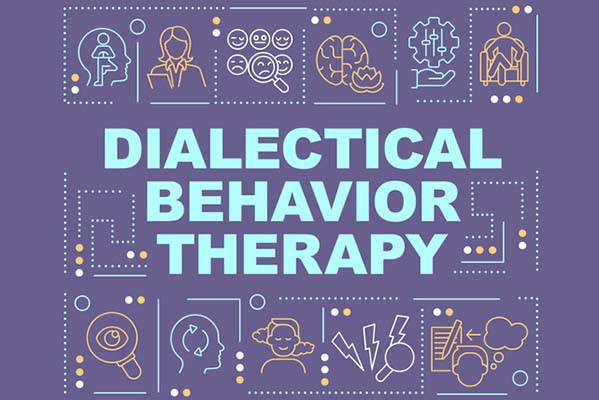
Dialectical Behavior Therapy (DBT) has long been a cornerstone in the treatment of individuals struggling with emotional regulation, borderline personality disorder (BPD), depression, and a range of other mental health challenges. Combining cognitive-behavioral principles with mindfulness, DBT helps individuals develop skills to cope with intense emotions, improve relationships, and live more balanced lives.
Now, with the integration of artificial intelligence (AI) into the mental health landscape, DBT is evolving in new and exciting ways. AI is making its way into the therapy room—both in virtual and hybrid formats—offering tools to enhance therapy, improve accessibility, and personalize treatment. But how exactly is AI being used in DBT therapy, and what does it mean for the future of mental health care?
What is DBT?
Before we dive into the role of AI, let’s take a quick refresher on DBT. Created by psychologist Marsha Linehan in the late 1980s, DBT is a structured therapeutic approach designed to help individuals manage overwhelming emotions, improve interpersonal effectiveness, and build a life worth living. DBT typically includes individual therapy, skills training groups, phone coaching, and therapist consultation teams.
The core of DBT is the combination of two seemingly opposing approaches: acceptance (mindfulness and validation) and change (learning new skills). This balance of strategies helps individuals find ways to change harmful behaviors while also accepting the challenges they face.
How AI Enhances DBT Therapy
While DBT has traditionally been delivered through face-to-face sessions with a trained therapist, AI is now bringing new possibilities for both patients and practitioners. Here’s how AI is enhancing DBT therapy:
1. Virtual DBT Coaching and Support
AI-powered virtual assistants can provide real-time support for clients outside of their scheduled therapy sessions. These digital tools often use chatbots or voice-based systems to assist patients in practicing DBT skills in everyday situations. For example, a virtual assistant might help a client cope with a moment of distress by guiding them through a mindfulness exercise, assisting with distress tolerance techniques, or reminding them of DBT skills they’ve learned in previous sessions.
This kind of support can be incredibly beneficial when clients need immediate assistance, especially in moments of crisis when it might be difficult to reach a therapist. By offering an accessible, 24/7 resource, AI can empower individuals to take control of their mental health and improve their coping strategies in real time.
2. Personalized Treatment Plans
AI has the potential to process vast amounts of data, making it easier for therapists to create personalized, data-driven treatment plans for their clients. By analyzing factors like emotional responses, thought patterns, and behavioral trends, AI tools can help identify areas that need more attention and refine the DBT skills that are most effective for each individual.
For instance, AI could track progress over time, highlight areas where a patient is struggling, and provide therapists with insights to adjust their approach. This helps ensure that clients are getting the most out of their treatment and makes DBT more tailored to the unique needs of each individual.
3. Monitoring Emotional States
One of the most critical aspects of DBT is understanding and managing emotions. AI tools, including wearables and mobile apps, are now capable of monitoring physiological data such as heart rate, skin conductivity, and other biometric markers that may indicate emotional distress. By tracking these biomarkers, AI can offer real-time feedback to individuals, helping them become more attuned to their emotional states.
For example, if a wearable detects a rise in heart rate that correlates with signs of anxiety, the AI system might prompt the user to begin a breathing exercise or suggest a grounding technique. This allows patients to address their emotions before they escalate into overwhelming feelings.
4. Reducing the Therapy Gap
There is an ongoing shortage of mental health professionals, and DBT therapists can be especially hard to come by in certain regions. AI-powered platforms can help bridge this gap by providing access to DBT tools, techniques, and support when in-person therapy might not be immediately available. AI chatbots and virtual therapists can offer psychoeducation on DBT skills, track progress, and provide valuable resources for clients who may not have immediate access to a live therapist.
In the case of hybrid or fully remote therapy, AI helps facilitate communication between clients and therapists, ensuring that even those who may face geographic or logistical barriers can still access the treatment they need.
5. Improving Therapist Training and Support
AI is also helping improve DBT for therapists themselves. Virtual assistants can assist DBT clinicians by automating administrative tasks such as scheduling, note-taking, and data analysis, freeing up more time for therapists to focus on their patients. Additionally, AI can help therapists stay updated on the latest research, best practices, and new interventions that can be integrated into DBT.
AI can also act as a learning tool for new therapists or those refining their skills, offering simulations, feedback, and analysis on their therapeutic techniques. This can enhance both the quality of therapy and the overall efficiency of the therapeutic process.
Challenges and Considerations
While AI offers incredible potential to enhance DBT therapy, there are also challenges and ethical considerations to address:
-
Privacy and Security: AI systems rely on personal data, which raises concerns about data privacy. Ensuring that patient information is securely protected is a top priority.
-
Human Connection: DBT emphasizes the importance of the therapeutic relationship. AI tools, while helpful, cannot replace the empathetic connection between a therapist and client. It’s crucial that AI supports rather than replaces human interaction.
-
Accurate Diagnosis and Treatment: AI’s ability to analyze and process data is powerful, but it must be used as a complement to human judgment. AI-driven insights should always be reviewed by a qualified professional to ensure that they are contributing to effective treatment.
The Future of AI in DBT Therapy
The integration of AI into DBT is just the beginning of a broader trend in mental health care. As technology advances, AI will continue to play an increasingly vital role in personalized treatment, emotional regulation, and therapeutic support.
As AI tools become more sophisticated, they may eventually enable real-time, adaptive interventions that guide individuals through their emotional challenges in ways that are tailored to their unique needs. Additionally, AI may support a more accessible, inclusive approach to DBT, bringing effective therapy to individuals who would otherwise face barriers to care.
Ultimately, AI has the potential to transform DBT from a traditional, in-person therapy model into a dynamic, accessible, and personalized experience that empowers individuals to better manage their mental health—on their own terms, whenever they need it.
By integrating artificial intelligence into DBT, we’re not just creating smarter, more efficient tools for mental health care. We’re fostering a future where therapy is more accessible, personalized, and adaptable to the unique needs of each individual—ushering in a new era of emotional well-being.
